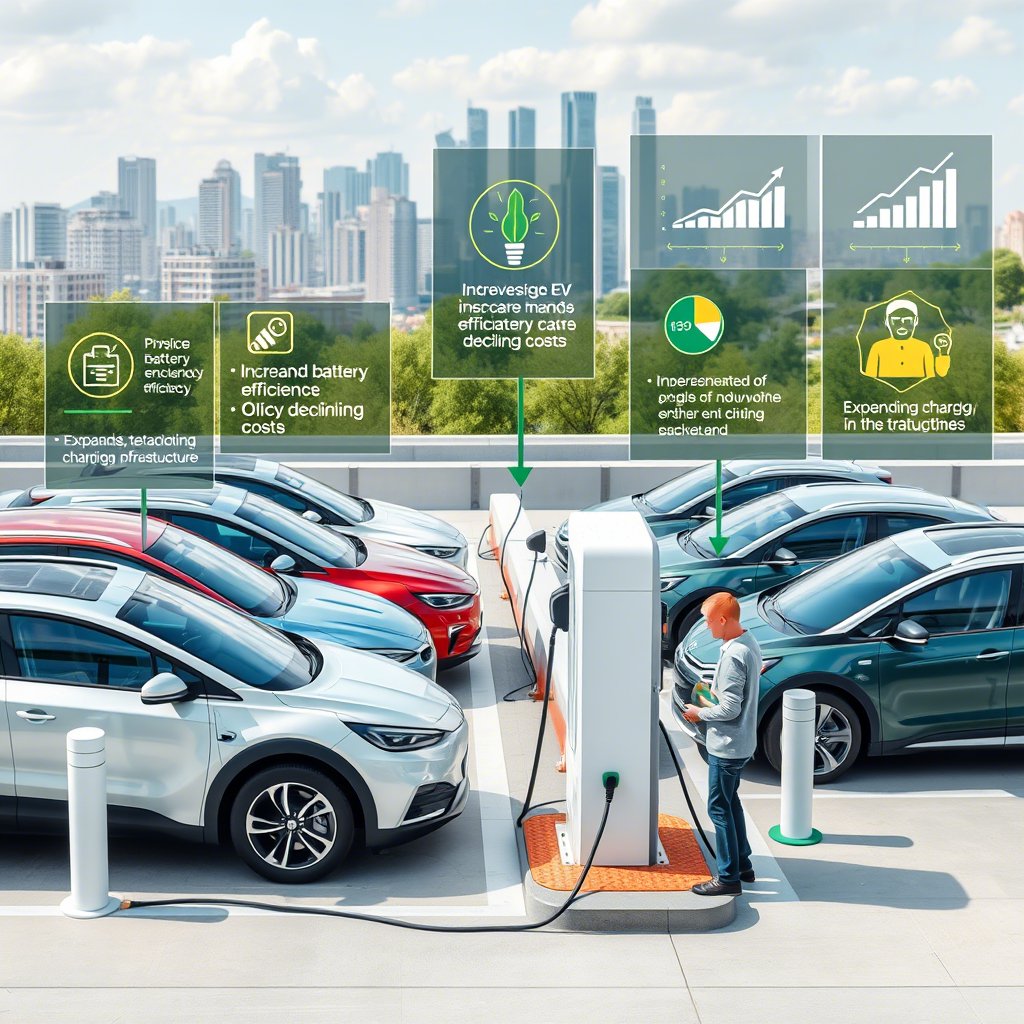The electric vehicle (EV) industry is undergoing a transformative phase, driven by technological advancements, regulatory support, and shifting consumer preferences. As one of the fastest-growing sectors globally, it offers immense opportunities for investors, manufacturers, and policymakers. This article delves into the key trends shaping the EV landscape, examines competitive dynamics, and explores future growth prospects.
1. Market Growth Drivers
Several factors are propelling the rapid expansion of the EV industry:
- Government Incentives : Policies such as tax credits, subsidies, and emissions regulations are accelerating EV adoption. For example, the U.S. Inflation Reduction Act provides up to $7,500 in tax incentives for qualifying EV purchases.
- Technological Innovation : Advances in battery technology, including solid-state batteries and lithium-sulfur designs, promise longer ranges and faster charging times. Companies like Tesla and BYD are leading this innovation wave.
- Consumer Awareness : Rising environmental consciousness and lower total cost of ownership compared to internal combustion engine vehicles are convincing more buyers to switch to EVs.
By 2030, analysts predict that EVs will account for over 30% of global car sales, up from less than 10% today.
2. Competitive Landscape
The EV market is highly competitive, with both established automakers and startups vying for market share. Key players include:
- Tesla : Dominating the premium EV segment with its Model S, Model 3, and Cybertruck, while investing heavily in autonomous driving technology.
- BYD : A Chinese giant specializing in affordable EVs and battery production, leveraging economies of scale to capture emerging markets.
- Rivian and Lucid Motors : Startups focusing on luxury EVs and innovative features like modular platforms and extended range capabilities.
Traditional automakers like General Motors (GM), Volkswagen, and Toyota are also aggressively transitioning to EVs, leveraging their manufacturing expertise and brand recognition to compete.
3. Supply Chain Challenges
Despite robust demand, the EV industry faces significant supply chain hurdles:
- Battery Raw Materials : Shortages of lithium, cobalt, and nickel have driven up costs, prompting companies to explore alternative materials and recycling solutions.
- Charging Infrastructure : Insufficient public charging networks remain a barrier to mass adoption, particularly in rural areas and developing countries.
- Geopolitical Risks : Concentration of critical mineral reserves in geopolitically sensitive regions adds uncertainty to supply chains.
Addressing these challenges will require collaboration between governments, private companies, and research institutions.
4. Emerging Trends
Several trends are reshaping the EV ecosystem:
- Vehicle-to-Grid (V2G) Technology : Allows EVs to feed electricity back into the grid during peak demand, enhancing energy efficiency and grid stability.
- Subscription Models : Services like Polestar’s subscription-based ownership offer flexibility, appealing to younger, urban consumers.
- Autonomous Driving : Integration of self-driving technologies promises to revolutionize mobility services and reduce operational costs.
Conclusion
The EV industry is poised for exponential growth, fueled by supportive policies, technological breakthroughs, and evolving consumer needs. However, navigating supply chain complexities and intense competition will be crucial for long-term success. Investors and businesses must stay attuned to these dynamics to capitalize on emerging opportunities.
